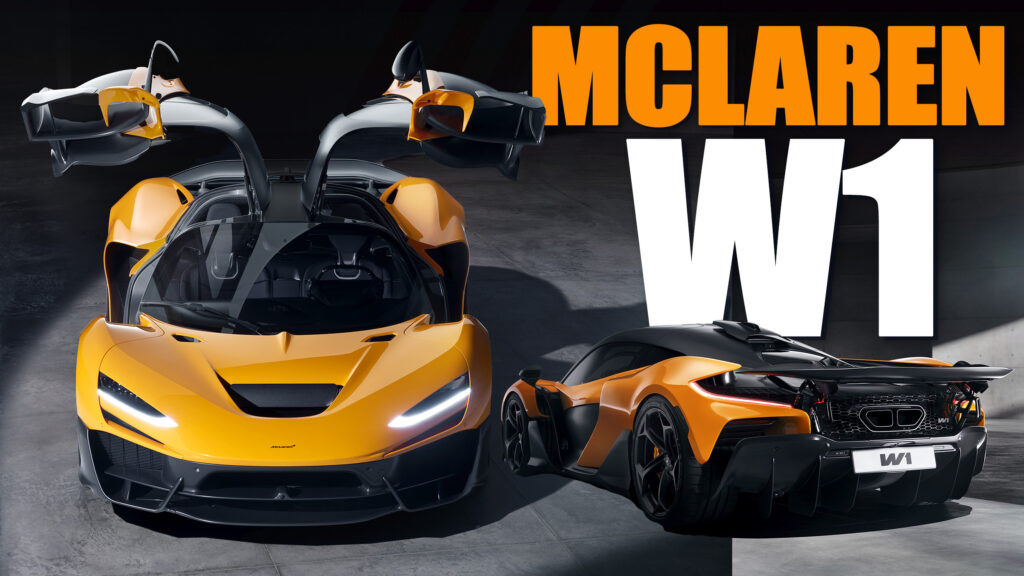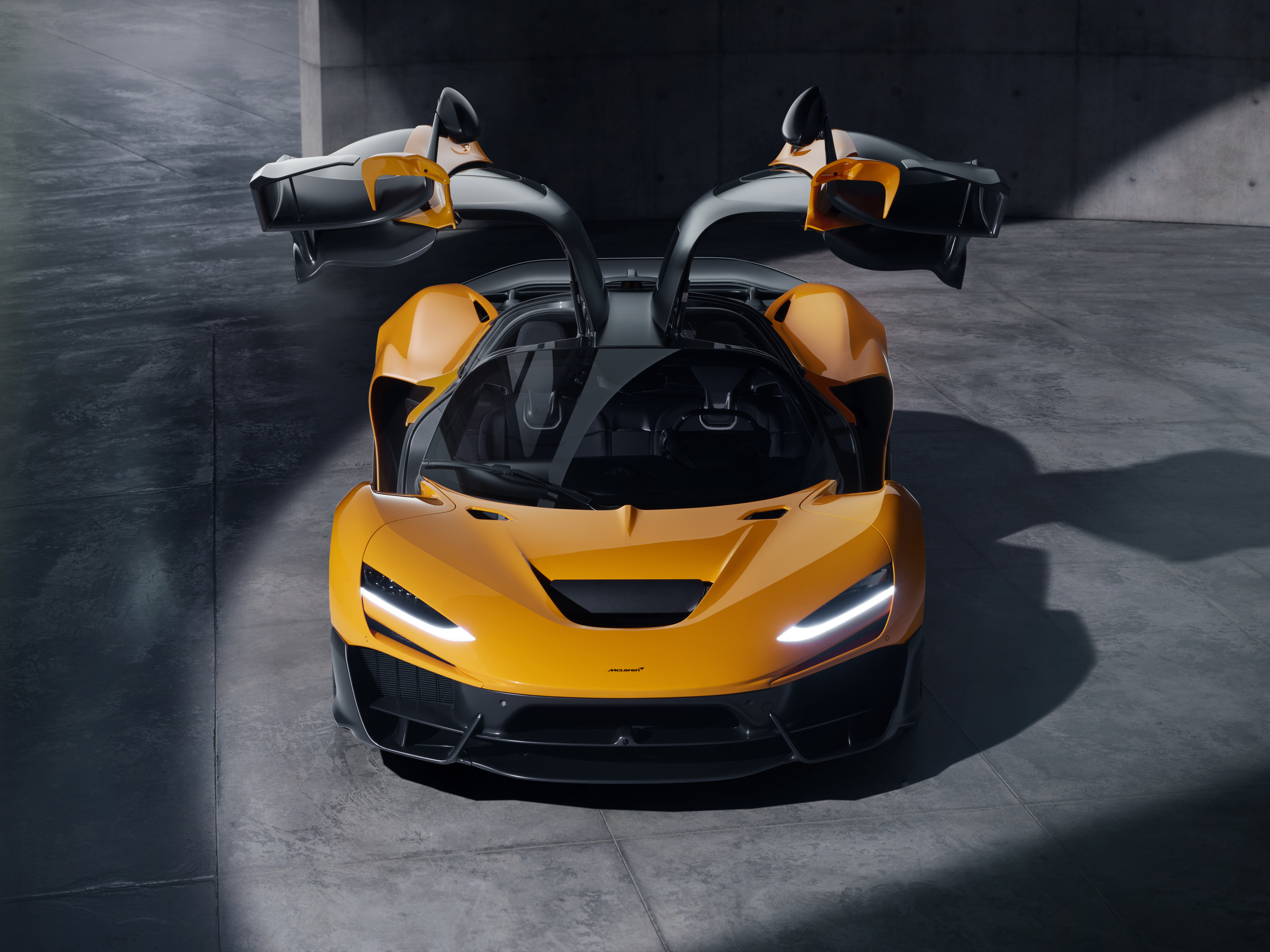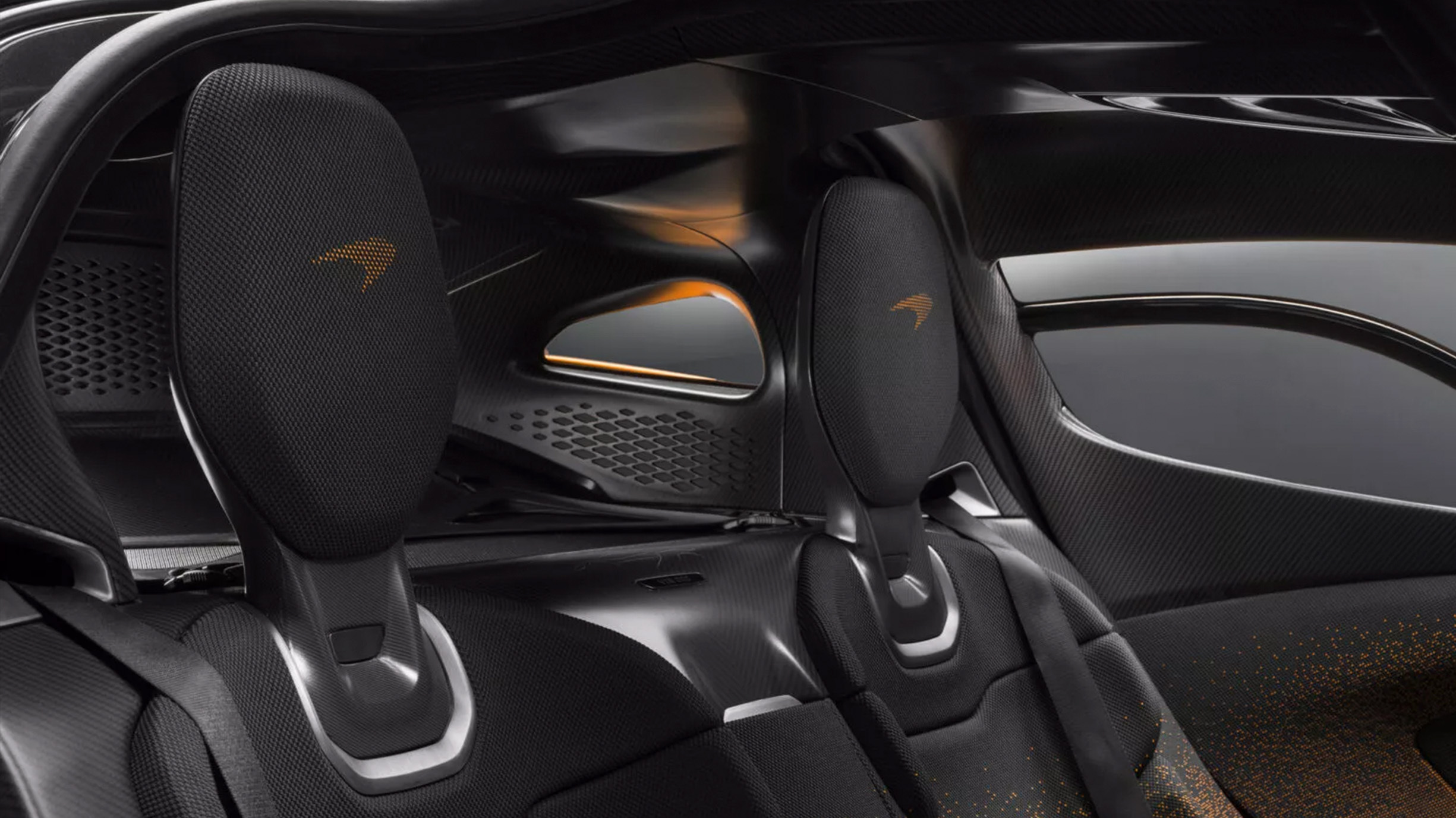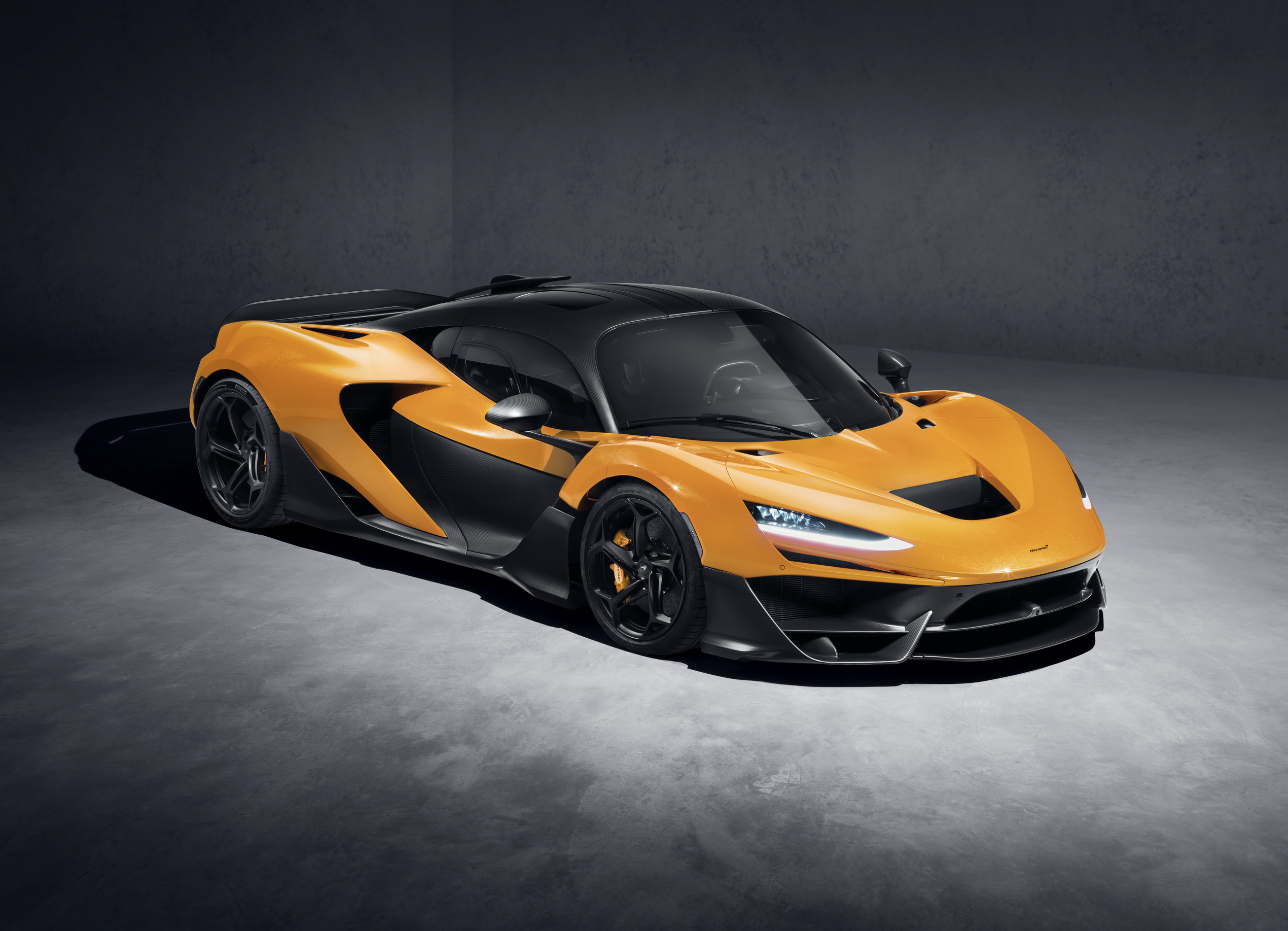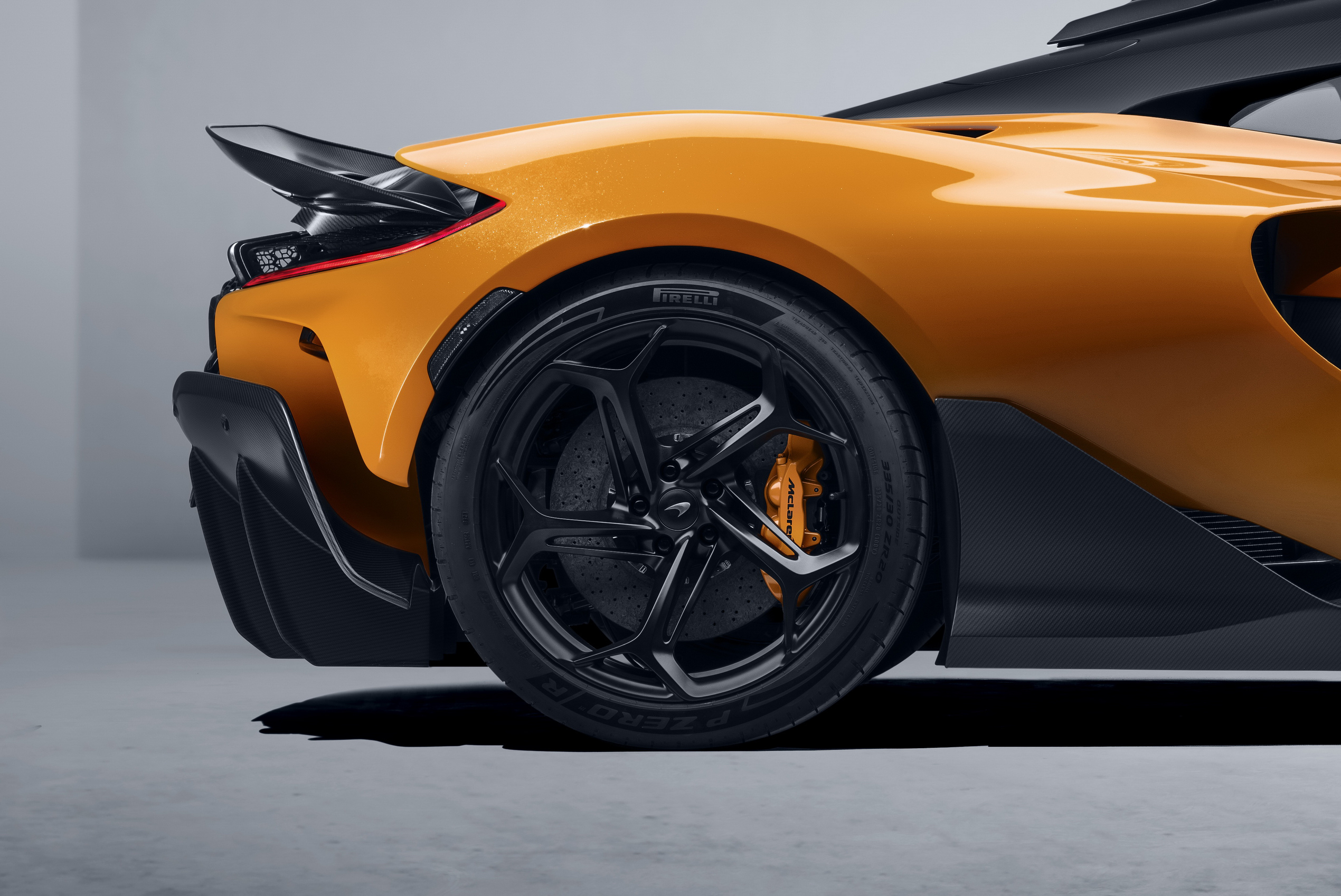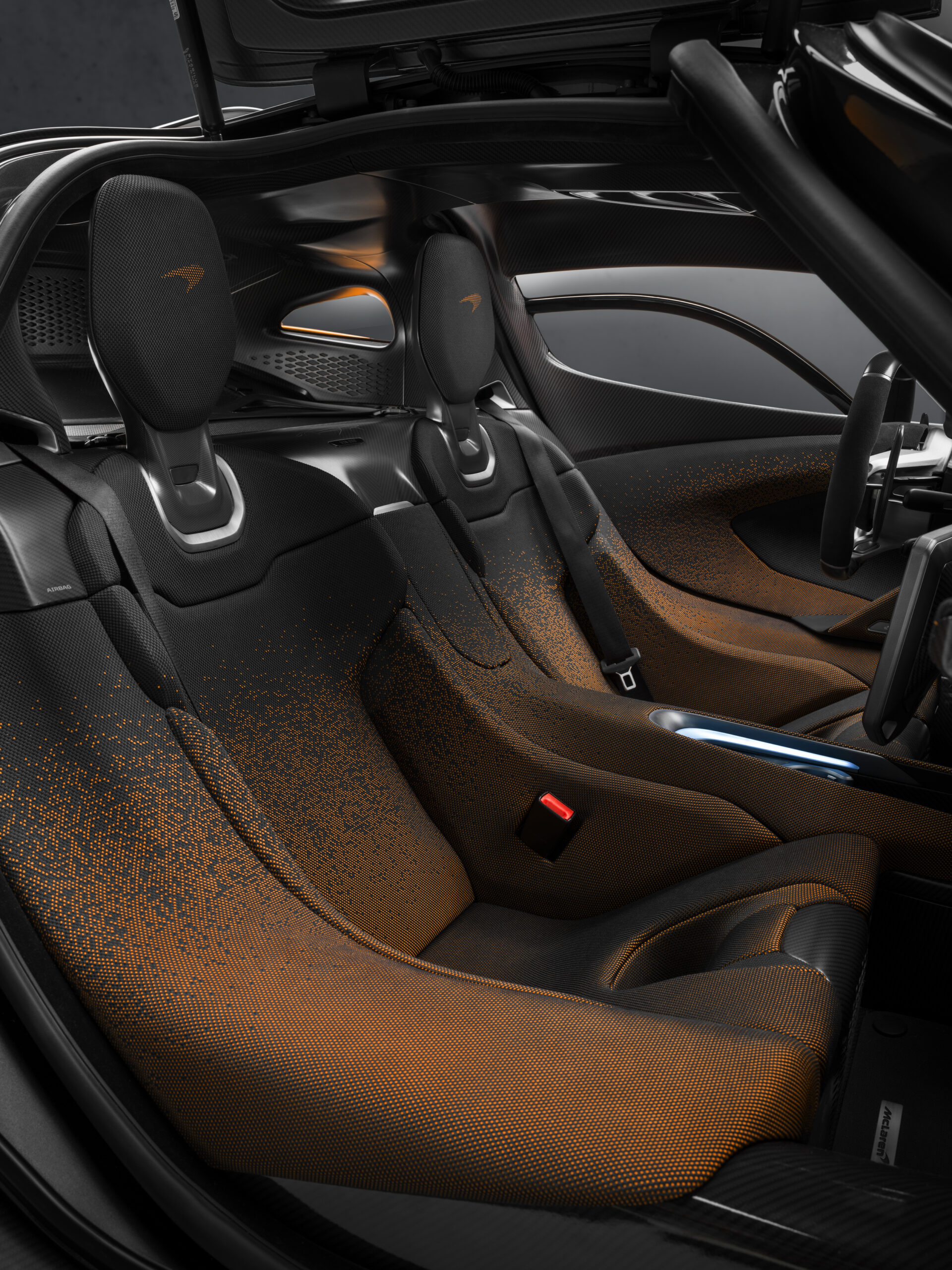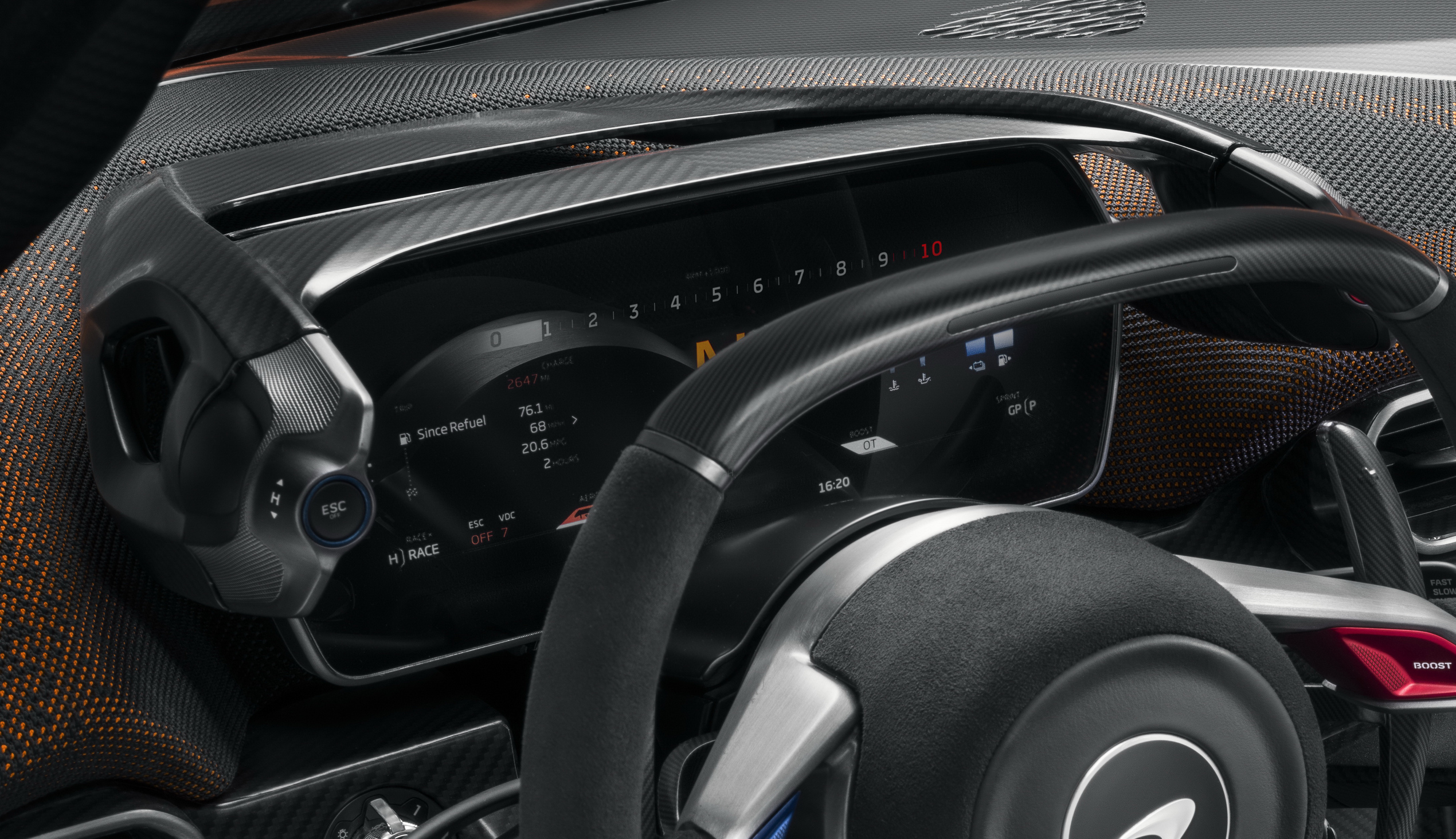- The McLaren W1 is the latest addition to the company’s “1” series of supercars, following the F1 and P1.
- It is the most powerful car McLaren has ever produced, delivering a combined output of 1,258 hp thanks to a hybrid V8 drivetrain.
- The W1 employs F1-inspired ground effect and active aerodynamics, making it three seconds faster than the Senna on a circuit.
This is it: the hypercar that will take over the reins at the top of the McLaren tree. It follows in the footsteps of the seminal F1 and its modern successor, the P1. McLaren is billing this, the latest entry to its “1” series of flagships, as “the ultimate expression of a real supercar.” Well, the F1 and P1 were, by all accounts, quite extraordinary themselves, but if this is the new standard, then it’s going to be a tough act to follow.
Straight off the bat, the headline numbers confirm that the McLaren W1 is something special. With a hybrid V8 powertrain, the W1 delivers a total output of 1,258hp (1275 PS / 938 kW) and 988 lb-ft (1,340 Nm) of torque, making it the most powerful car the company has ever produced.
Read: McLaren Remembers The F1 And P1, Just In Time For Their New Hypercar Reveal
And, thanks to a focus on making the car as light as possible, the W1 also has a best-in-class power-to-weight ratio of 899bhp/tonne. In fact it’s barely any heavier than the P1 it succeeds, tipping the scales at 3,084 lbs (1,399 kg).
Specs
Happily, to keep the weight down, McLaren has resisted the urge to go all-wheel drive and has instead continued sending power to the rear wheels as a tribute to their racing heritage. Oh yes, there’s lots of talk about F1-inspired this and sporting legacy that when it comes to this new flagship – you’ve been warned.
Enough preamble. What does all this translate to in terms of actionable metrics? Well, it’s the quickest road-going McLaren on record. While the 0–62 mph (0–100 km/h) time of 2.7 seconds is impressive alone, perhaps more so is the fact that the W1 can get up to 124 mph (200 km/h) in 5.8 seconds and up to 186 mph (300 km/h) in less than 12.8 seconds.
Top speed is limited to 217 mph (350 km/h). Oh, and there’s the small fact that the W1 is three seconds a lap faster around McLaren’s Nardo reference circuit than the track-specialized Senna.
A New V8 Heart
McLaren continues to make the combustion engine the star of the show for the W1, with the MHP-8 V8 delivering 916 bhp (929 PS / 683 kW). Although the specs of the engine sound somewhat familiar to what has been underpinning many of McLaren’s supercars in the past (with origins in an ’80s Nissan Group C design nonetheless), the MHP-8 is described as an all-new engine.
It remains a twin-turbo V8 90-degree flat-plane crank V8 with a capacity of 4.0 liters. It redlines at 9200 rpm thanks to some Star Trek-sounding plasma spray coated cylinder bores, and as you’d expect, there’s the obligatory use of copious amounts of aluminum in the engine’s construction.
Fuel is practically catapulted into the cylinders at 350 bar, thanks to Gasoline Direct Injection (GDI) – the same kind of tech championed by Mitsubishi in the ’90s. As with the various applications that have seen GDI used over the decades, the tech is one way to keep the W1’s emissions in check. The less eco-warrior benefit is that it allows the MHP-8 engine to have the highest-ever specific output, which is a sizeable 230 hp per liter.
Performance
The Hybrid Bits
While the V8 may be touted as the star of the show, the rest of the drivetrain is just as important. The hybrid gubbins are lighter in the W1 than they were in the P1, and the E-Module uses tech borrowed from both IndyCar and Formula 1. It supplements a total of 342 hp (346 PS / 255 kW), with the electric motor and control unit integrated as one for better packaging.
Read: McLaren Rules Out Entry-Level Supercar Below The Artura
The motor is powered by a 1.384 kWh battery. If you think that sounds puny, you’d be right. It’s only enough for the W1 to travel 1.6 miles (2.6 km) in electric-only mode, which isn’t even half the length of Monaco’s coastline – somewhere we expect the majority of these cars to end up driving around. Of course, running the W1 in EV mode is likely less concerning to those who’ve picked one up. Still, you get an onboard charger if you want to top things up.
The battery and electric motor are also employed for reversing and starting the car up after extended periods of dormancy and are coupled with an eight-speed gearbox. What isn’t electric, however, are the steering and braking systems, which both remain hydraulic; McLaren is not willing to compromise on feel.
Active Aero Abounds
The borderline fussy design elements of the front facia, combined with the many surfaces, slats, and gills down the side of the W1, are by design to aid in aero, and (yes, you’ve guessed it) it’s all inspired by McLaren’s racing arm. “Ground effect” has been the buzzword in F1 since the last regulation changes, and they make their way to McLaren’s top-tier road car here as well.
What’s slightly less F1-inspired (unless you count DRS) is the car’s active aero. It takes the same kind of innovation that we’ve seen before on cars like the Senna and the 765LT, but the British automaker says that this is the first time you can basically have two cars in one.
The car can “shape shift” when it comes to track duties, with active front and rear wings springing into action when the its put into race mode. The rear features an “Active Long Tail” rear wing that extends the working area of the diffuser and acts as an air brake and a DRS wing. While the top side may look fairly aero-optimized, it’s the underbelly of the beast that provides the most effective use of the ground-effect aero — no doubt hoovering the car to the ground like a particularly determined limpet.
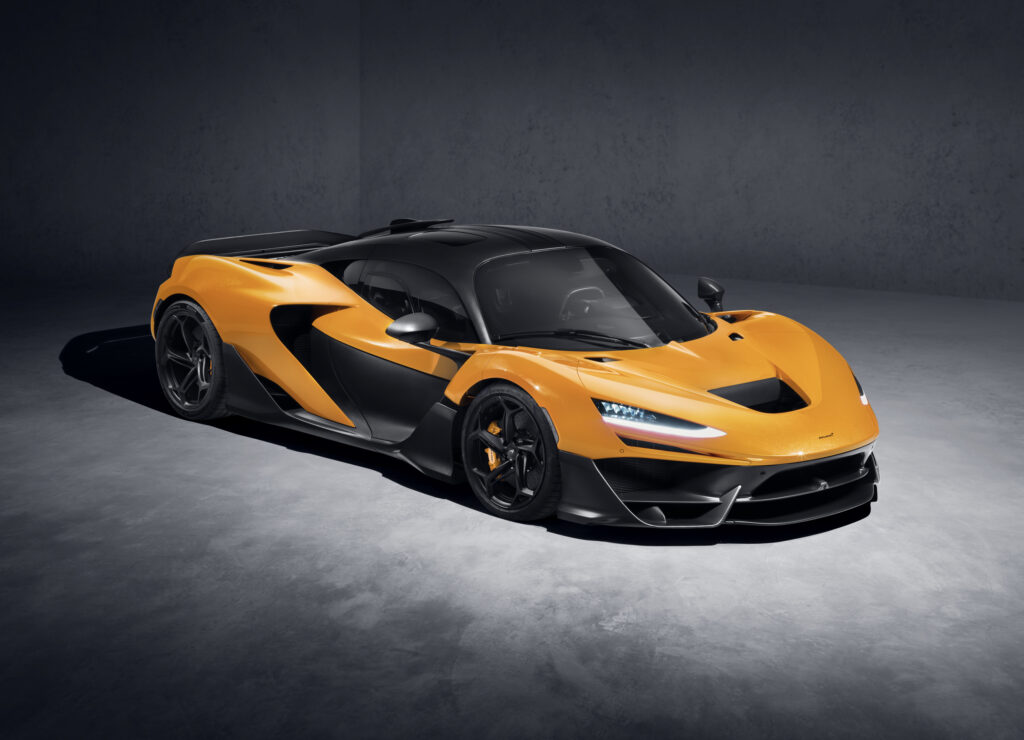
In race mode the W1 lowers itself by 1.46 inches in the front, and 0.7 inches in the rear. Then, with its active wings and Active Chassis Control III, it’s capable of generating up to 772lbs (350 kg) of downforce at the front and 1,433lbs (650 kg) at the rear, giving a total downforce of up to 2,205lbs (1,000 kg) in high-speed corners.
Everything else has been molded around the designers’ desired shape, with some stylistic and ergonomic elements sacrificed in the process. The front suspension has been designed not to impede the body’s aerodynamic flow, with lower wishbones thanks to push rods and inboard dampers. You’ll notice a smaller window aperture, and the seats remain fixed in place, with the pedals, steering wheel, and other controls being adjustable instead.
Priced From $2.1M, But All Sold Out
The price of all this? Well, McLaren says that the W1 will start at $2.1 million, but heavily hints that things will only spiral from there. That’s because there is apparently an unlimited list of bespoke options available from McLaren Special Operations (MSO), meaning that, in theory, no two cars will be the same.
That, and the fact that only 399 examples of the W1 will ever be built, all of which have already been spoken for. Though, if you are one of those lucky 399, you’ll be pleased to know that the W1 comes with a four-year/unlimited mileage warranty on the vehicle, with six years and 45,000 miles for the battery.




